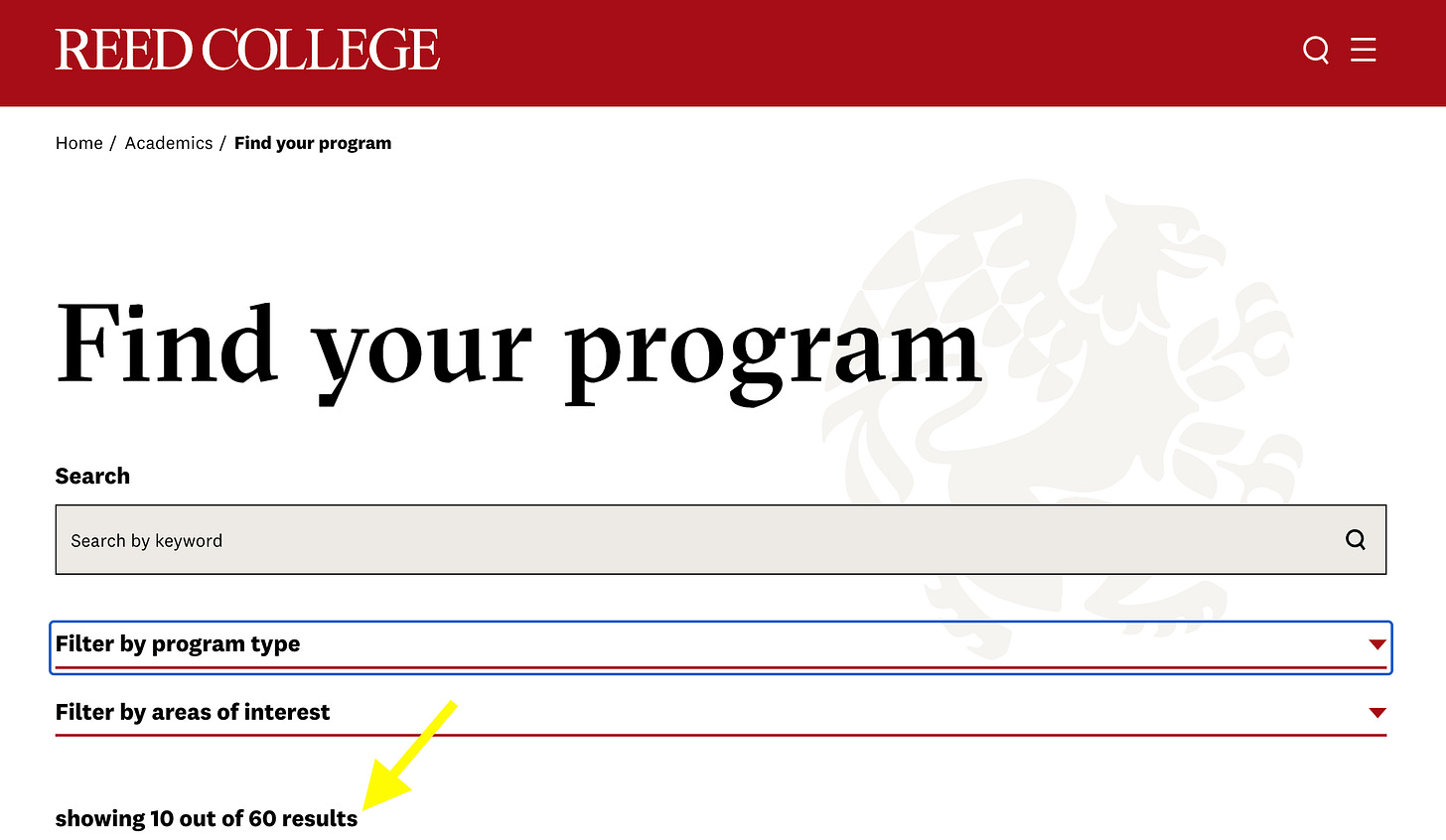The US is home to over 5,000 colleges and universities, so you’d be forgiven if you aren’t familiar with all of them.
Even after nearly two decades in the industry, I still regularly come across colleges and universities that are new to me.
As a result, over the years I’ve created a simple, 10-minute process for quickly understanding and assessing an institution.
It’s a process I use often; whether it’s after someone reaches out to us at Kanahoma, I meet someone at a conference, or I hear a headline about an institution I’m unfamiliar with.
So the next time you hear the name of a college or university you aren’t familiar with, give this a try…
The 10 Minute Institutional Assessment
In an effort to properly demonstrate the process, I started with ChatGPT and asked it to provide me the name of a random, regional private college in the United States.
The Result? Reed College in Portland, Oregon
Now, while I am already familiar with Reed College, here is the process I would use if I was not.
Google Gets the Basics
I start by Googling the institution to confirm where they’re located and review the information provided by the Google answer box.Get the Cliff Notes from Wikipedia
Next, I go to Wikipedia and scan the institution’s page. In doing so, I’m not looking to read the full entry, but instead focus on the index, as this is a place that will call out key information, such as name changes or recent controversy.Preview Their Positioning & Programs on Their .EDU
I then go to the institution’s .edu website. I start on the homepage and scan to understand their current positioning, followed by attempting to navigate through their academic discovery process so I can understand the breadth and depth of their program offerings.Track Their Enrollment with DataUSA.io
From there, I go to DataUSA.io and do a review of the institution’s enrollment and admission statistics for the past 10 years. If I’m feeling particularly inquisitive, I’ll download a CSV of their enrollment data, rolling up their part-time and full-time enrollment and creating a simple line chart of their performance against their peers.Track Demand with Google Trends
Going to Google Trends, I’ll do a quick review of the past 20 years of search demand for the institution’s brand.Audit Their Advertising with Facebook Ads
I’ll then go to the institution’s primary Facebook page and review their recent paid social activity, available in the Facebook Ad Library.Creep Their Community on Instagram
I’ll then jump over to Instagram to get a feel for how they promote and celebrate their community, the type of content they create, as well as get an idea for their level of engagement by scanning past posts to highlight average volume of likes and comments.Read the Real Reviews on Reddit
I’ll then scan top Reddit posts about the institution to get an idea for the tone and tenor of public discourse around the institution.Spot Their Commercials on iSpot.TV
Next, I’ll go to iSpot.TV to see if the institution has run any recent nationwide TV commercials. The platform catches both paid advertising, as well as value-add spots included during national sports broadcasts.Track Traditional Coverage
Finally, I’ll search the institution’s name across both Inside Higher Ed and the Chronicle and review headlines for the most recent articles.
Bonus
If I’ve got the time, I’ll often also go to the institution’s YouTube channel and watch the-more-often-than-not pinned overview video, or even take the time to scan the institution’s 990 tax filing.
Conclusion
So that’s it! Your first time through it may take you a bit longer, but I’ve gotten it down to about a 10 - 15 minute process that I run through each time I’m looking to get up to speed on an institution that’s new to me.
Did I miss something you rely on when researching a college or university? Let me know!
Editor’s Note
I want to take a moment to congratulate two friends I deeply admire - Ashley Budd and Dayana Kibilds - who launched their new book “Mailed It!” this week. I’ve ordered my copy already and would encourage you to do the same!
About The Author
Seth is the founder and CEO of Kanahoma, a San Diego-based performance marketing agency on a mission to build a better agency for organizations building a better world.
You can learn more about who we are and what we do at www.Kanahoma.com.















The series of College Viability apps can help too. Public and private college versions for enrollment tracking, graduation rates, finances - along with the Program Completion App that compares the completion numbers for about 3,000 colleges.
Excellent post Seth! I also use the Fiske Guide, and increasingly Colleges Worth Your Money because it describes pricing and the number of students who have internships. For people in the biz and for families, it's also helpful to use various resources to understand how much non-need based financial aid an institution gives (merit aid!) and their yield rate (percent of accepted students who enroll). Such as Jeff Selingo's "Buyers and Sellers List." Also the federal government's College Scorecard.